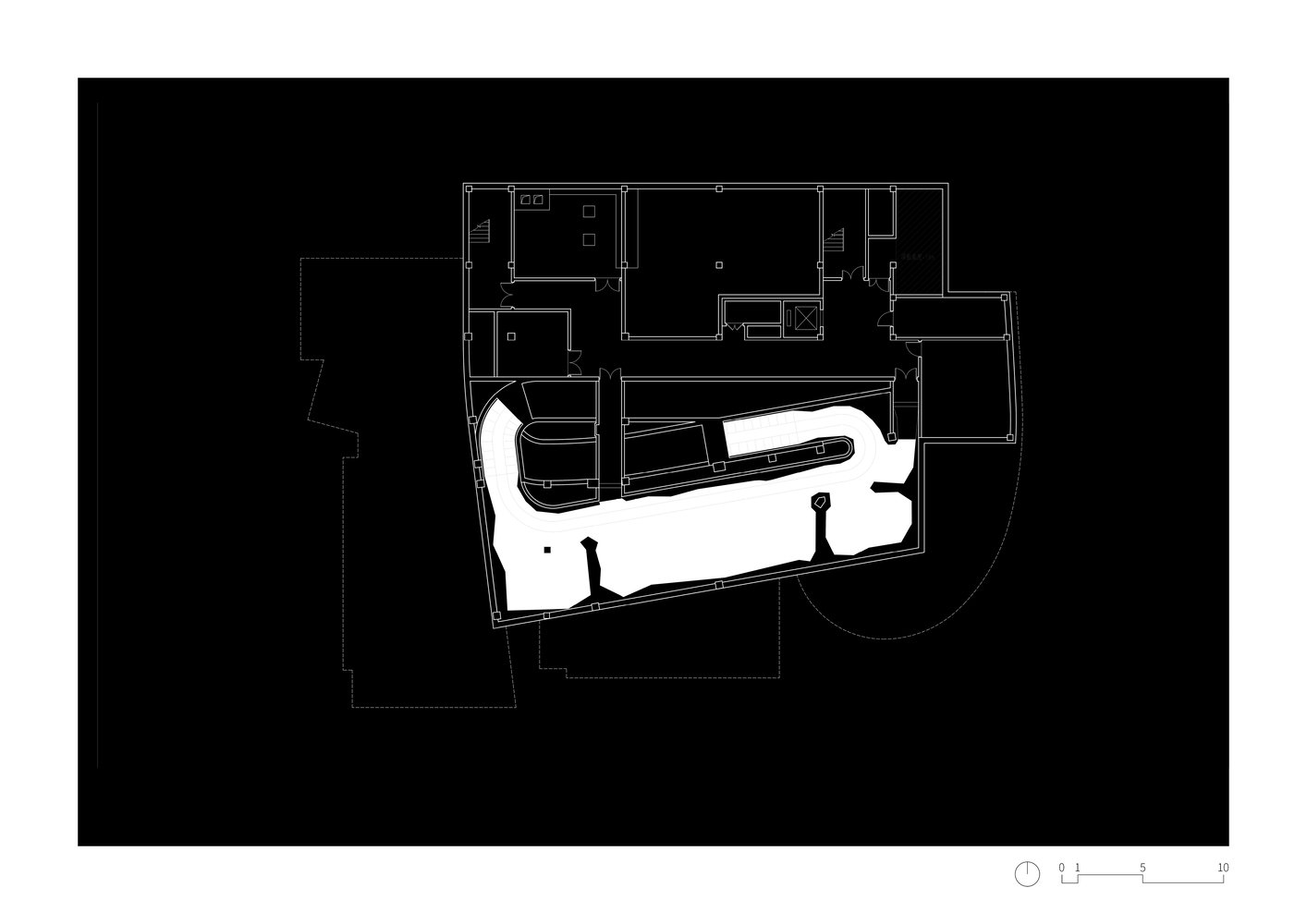Zisha Mineral Source Museum
Location: China
Year: 2024
Architects: Architecture School of Southeast University + Atelier XÜK
Photography by: Images courtesy of Atelier XÜK
Ink has five pigments, and clay has five colors. Chinese people write with ink and cast utensils with clay, which gave birth to the Chinese culture.
The shore of Taihu Lake and the continuing range of Tianmu Mountain have created the terrain and mineral context of Dingshu.
The Chinese culture veins, the Dingshu terrain veins, and the Zisha mineral veins are the source of inspiration for the Huanglong Mountain·Zisha Mineral Source Museum.
Project Background
Dingshu Town, which is located in the southeast of Yixing City, is well known as the "Capital of Pottery". Huanglong Mountain has been a producer of high-quality Zisha raw materials (a special type of clay) since ancient times in the history, and can be named as the "Source of Zisha". This project specifies the protection strategy for the No. 4 mine historical remains and designs the Zisha Mineral Source Museum.
No. 4 Mine
The No. 4 Zisha mine of Huanglong Mountain was first built in 1972, while stopped mining in 1997. In 2009, it was announced as a municipal cultural relic protection unit by the Yixing Municipal Government.
Protection Strategy
Reinforce, repair and protect the ruins to make it an exterior exhibition space, which is integrated with the interior exhibition hall through circulation and visual contact. The design appropriately transform it based on the principle of "Minimum intervention, Historical restoration, and Activation" to make it a reference for the protection and renewal of architectural heritage.
- Respect the ruins: Guiding tourists to discover the No. 4 Mine Ruins Site through the architectural boundaries and entrance orientation.
- Activate and regenerate the damaged area: Considering and reconnecting the damaged mountain with the landscape of the building as a whole.
- Forming entirety with the building: Connecting the exterior exhibition space of the No. 4 mine ruins with the interior exhibition touring route.
Design Concept
- Integrated Design: Strive to respect the site, rather than oppressing the environment, and guiding tourists to discover and roam naturally in the territory.
- Space for Communication and Integration: The five blocks symbolize five 'Golden Flowers', and the surface of the glazed tiles transforms into five-color ink. A vortex-shaped exhibition route from the ground to the earth in the museum connects the three exhibition halls on the ground floor and the underground mine tunnel into one complete space.
- Multi-media Exhibition: Using multi-media to simulate the real mining experience, so that this period of history can be reborn in a modern method.
Glazed Tiles as Surface Material
"Glazing" means applying a finishing layer to the surface of pottery to achieve the purpose of beauty, airtightness, anti-penetration, and increase strength.
The colored glaze treatment is used on the facade tiles, in order to make the facade present a rich light and shadow reflection effect. When people approach and touch it with their hands, it will evoke a rich sense of contact with the building.
Project Significance
Laozi said, "By the existence of things we profit, and by the non-existence of things we are served." Both pottery and architecture interpret the wisdom of the ancient philosophers. Therefore, the No.4 mine ruins and the museum are just like the entity and void, weaving together the old and new. Text description by the architects.
























